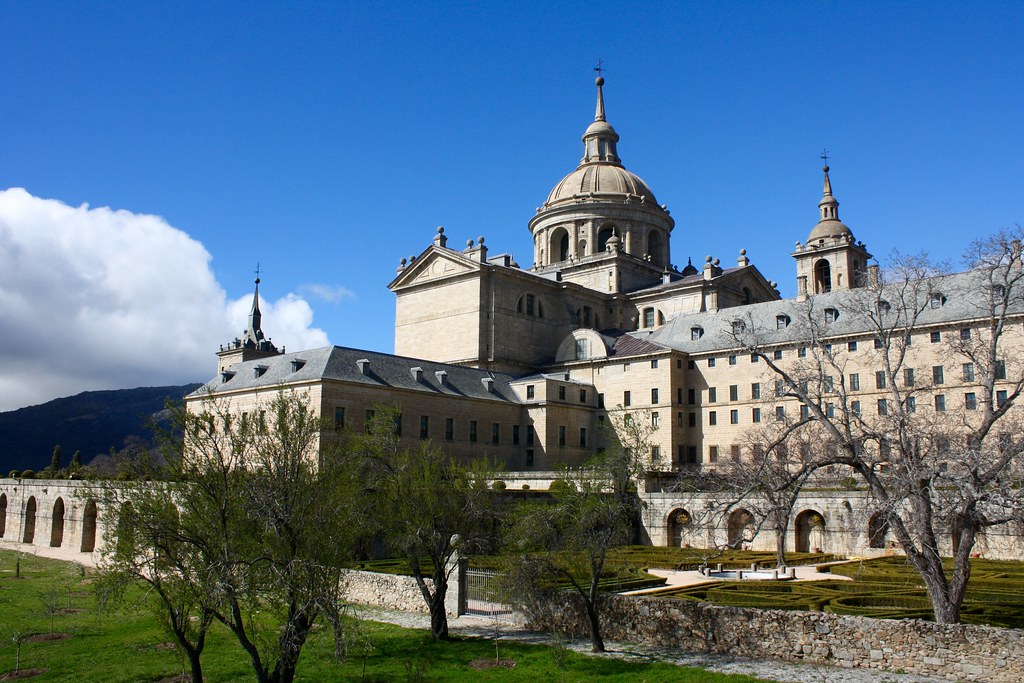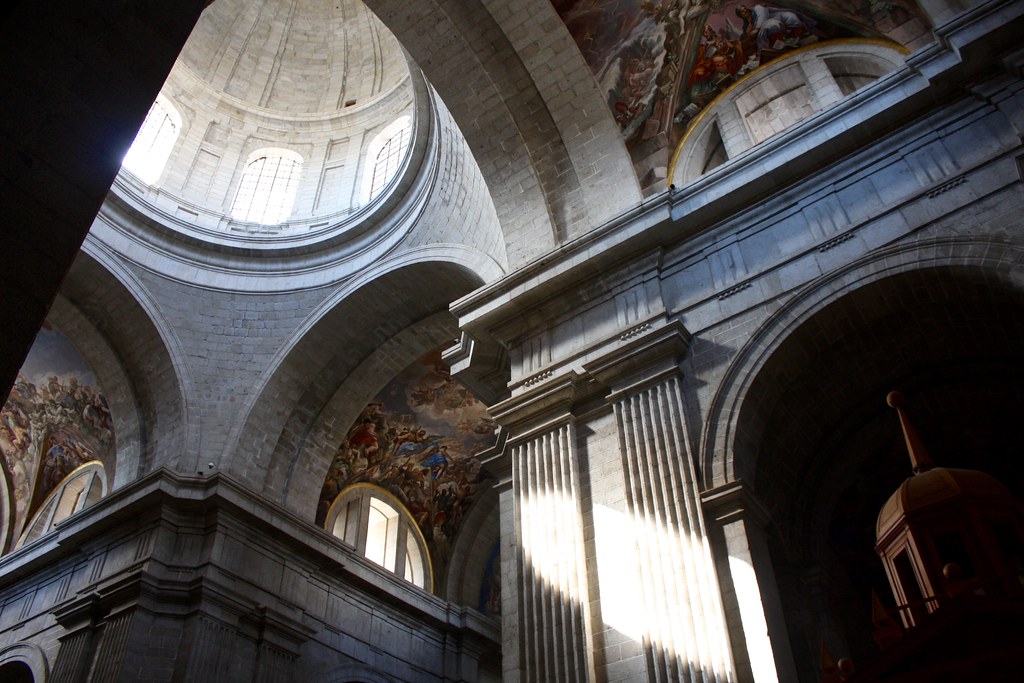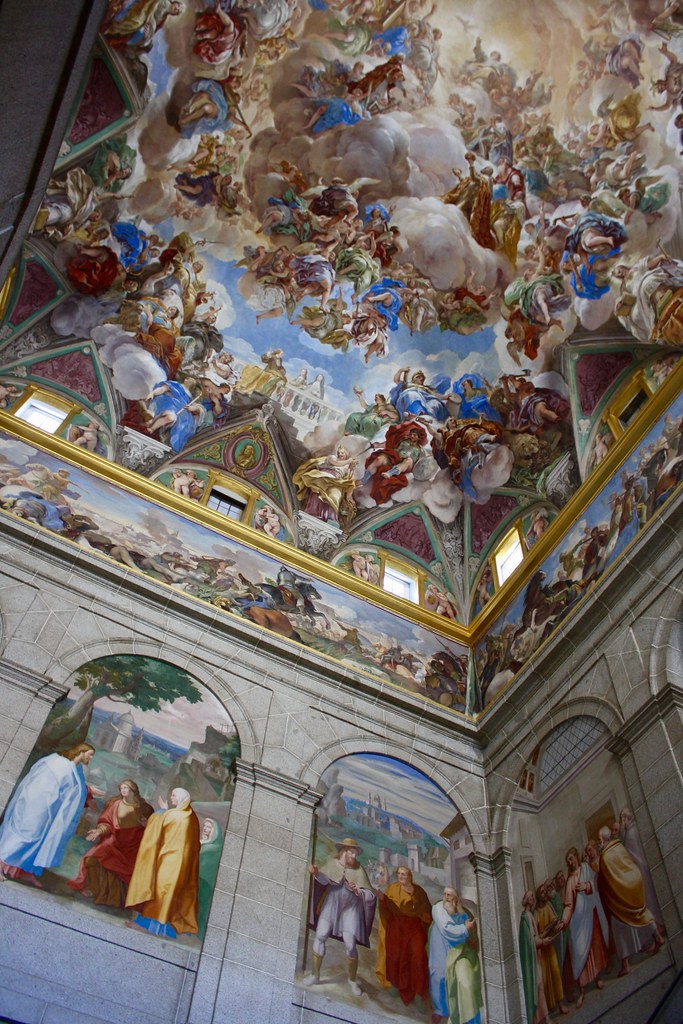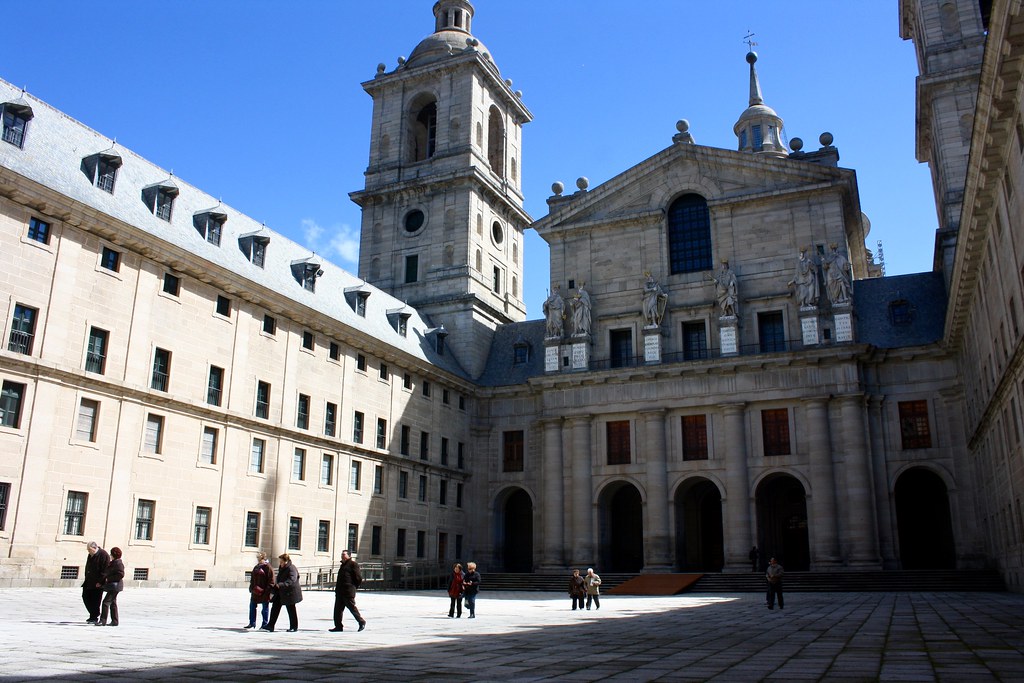As far as monuments go,
Madrid doesn’t have much to offer. Yes, the Spanish capital’s got a Baroque royal palace, a cathedral that was finished in 1993, and the opulent San Francisco el Grande domed basilica. But compared with other Spanish cities like
Sevilla or
Toledo, there’s not much for history nerds with a checklist to see in Madrid. That’s where daytrips to nearby
World Heritage Sites come in, places like Alcalá de Henares, Aranjuez, and El Escorial.
To get your history fix, you’ve got to head northwest out of Madrid toward the Guadarrama mountain range to reach the
Royal Monastery of San Lorenzo de El Escorial. Conceived primarily as a royal mausoleum by King Felipe II, it was constructed between 1563 and 1584 and is one of the purest (and largest) examples of Renaissance architecture in Europe. But El Escorial isn’t merely the burial place of all Spanish monarchs since the 1500s; it also contains a still-active monastery, a soaring basilica, a library of old books, a small art museum, and a royal residence. And it’s one of the biggest buildings in the world.
Felipe’s father, Holy Roman Emperor Charles V, had requested on his deathbed that he be buried not in
Granada with Ferdinand, Isabella, and all them, but in a specially-built mausoleum that would also house the remains of his descendants and all future Spanish royalty. What began as a modest burial chapel (with an attached monastery whose monks would pray for the soul of the king) expanded into a sprawling project of sixteen courtyards that would consume the royal budget for decades.
You see,
Felipe was an extremely religious man. After his first military victory as king at the Battle of Saint-Quentin in 1557—which happened to fall on the feast day of St. Lawrence—he decided to dedicate this mausoleum/monastery/palace to the saint in gratitude for his success on the battlefield…although according to legend he may have also done so to atone for his troops’ accidentally destroying one Church of Saint-Laurence while waging war in France. Now,
St. Lawrence was a Christian from
Osca in Roman Spain who was martyred in the year 258, supposedly by being roasted alive on a gridiron over hot coals. Even the gridded floor plan of El Escorial resembles the straight lines and right angles of a grill.
It was from here, nestled up against the Guadarrama mountains and close to the geographic center of the Iberian Peninsula, that King Felipe II micro-managed the affairs of all his many realms, which included Spain, Portugal, the Low Countries, and southern Italy, not to mention all of south and central America. Felipe intended El Escorial to be not only the Spanish Empire’s gleaming center of government, but also a imposing base of operations to support the Catholic Counter-Reformation against newly-ascendant Protestants.
After his father, Felipe would be only the second Spanish monarch interred at El Escorial, but in the four centuries since his death,
the niches in the luxurious marble “Pantheon of Kings” have all been filled. Who knows where the (abdicated) King Juan Carlos I will decide to be buried when he ultimately passes away?
How to get there
Getting here is pretty easy, but having visited the area two times now, I’ve figured out the best way of daytripping out here from central Madrid. My natural instinct is to simply hop on a
train, and a Cercanías (commuter rail) line does run out here from the Atocha station, the purple C-3 one. However, the Cercanías train stops in the next-door village of El Escorial, whereas the monastery itself is properly located in the town of San Lorenzo de El Escorial, a 17-minute hike from the train station. It’s really confusing, I know—two distinct municipalities that border each other with almost the exact same name. There is a local bus (L1) that runs between the Cercanías station and the main square, but it’s just another thing you gotta wait and pay for.
Instead, I recommend making your way to northwest Madrid’s Moncloa transfer center (look for the
Intercambiador de Moncloa near a triumphal arch). Here you can catch bus routes
661 or
664 directly to San Lorenzo de El Escorial’s bus station, only 7 minutes away on foot from the monastery.
There’s a lot of mediocre and expensive eating options in the city, but I had a great
menú del día (fixed-price lunch menu) at
Restaurante Taberna Madrid-Sevilla (per
Courtney Likkel’s recommendation). Their weekday menu runs 12,90€, which is fairly reasonable for pricy El Escorial, and I enjoyed their fried eggs with home fries &
pisto in their un-pretentious dining room.
Have you been to El Escorial before? What was your verdict—awe-inspiring monument or side-show for history nerds? Tell me below in the discussion thread!







